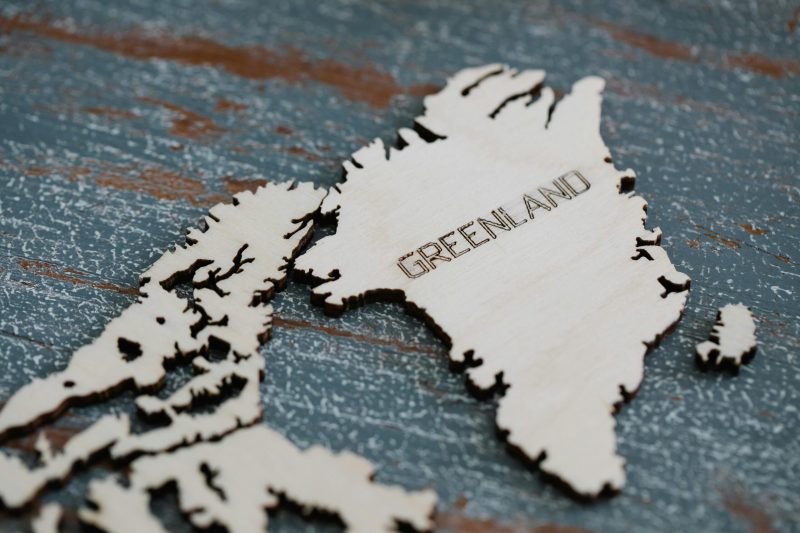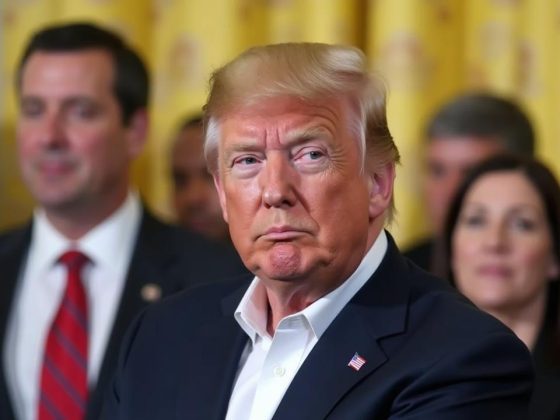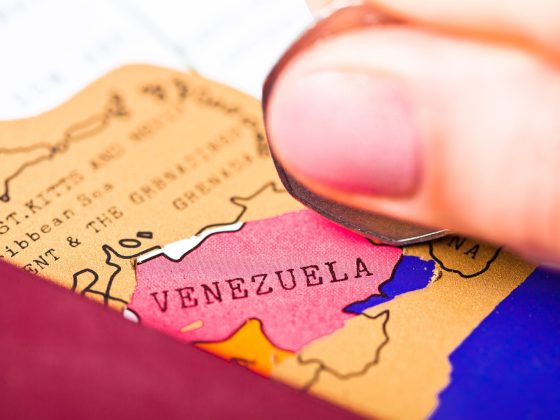In 1946, President Harry Truman proposed buying Greenland for $100 million in gold, recognizing its strategic importance in the early Cold War.
The offer was rejected.
Decades later, Donald Trump reignited the idea in 2019, framing it as “a large real estate deal.”
Now, as Trump prepares to re-enter the White House, he has escalated his rhetoric, suggesting military force or economic pressure to bring Greenland under US control.
While this proposal has drawn criticism worldwide, it reflects the rising importance of the Arctic in global geopolitics.
What makes Greenland so valuable?
Greenland is no ordinary island. It is the largest in the world, spanning over 2.1 million square kilometers.
Its position between North America and Europe places it at the heart of transatlantic relations.
It sits along the shortest route for missile and air travel between the continents, making it indispensable for the US ballistic missile early-warning system.
Additionally, Arctic shipping routes are becoming increasingly navigable due to climate change.
The Northwest Passage and the Northern Sea Route promise to reduce travel times for global shipping, giving Arctic nations a significant economic edge.
For the US, Greenland is not just a gateway but also a defense buffer. It hosts the Pituffik Space Base (formerly Thule Air Base), the northernmost US military outpost.
This installation plays a critical role in monitoring Russian and Chinese military activities, ensuring satellite communications, and providing missile defense.
Greenland’s mineral reserves are another draw.
A 2023 survey identified 25 of 34 critical raw materials on the island, including rare earth elements, lithium, and graphite.
These materials are essential for renewable energy technologies, batteries, and military equipment.
Rare earths, for instance, are vital for electric vehicles, wind turbines, and advanced electronics.
While Greenland’s hydrocarbons and minerals remain largely untapped, they represent a significant opportunity. However, resource extraction is contentious.
Environmental concerns and Indigenous opposition have stalled many projects.
Who owns Greenland?
Greenland is an autonomous territory within the Kingdom of Denmark.
It governs its domestic affairs, including healthcare, education, and natural resources, while Denmark retains control over foreign policy and defense.
Since 2009, Greenland has had the right to declare independence through a referendum.
Calls for independence are growing, driven by historical grievances, including colonial-era policies such as forced birth control campaigns on Greenlandic women.
Prime Minister Múte Egede has indicated that a referendum could be held within the next decade.
However, independence for the island wouldn’t be straightforward.
Greenland’s economy is heavily dependent on Danish subsidies, which account for about half of its public budget (€600 million annually).
Fishing, the island’s primary industry, lacks the scale to replace this support.
If Greenland gains independence, it would need to secure alternative financial and defense arrangements.
The US could play a significant role, offering economic aid in exchange for strategic agreements.
However, many Greenlanders remain wary of becoming a US dependency, valuing their autonomy and Indigenous heritage.
Trump’s renewed interest
Donald Trump’s latest push to acquire Greenland is driven by more than economic considerations.
His administration has reframed the issue as a matter of national security.
Trump argues that controlling Greenland is essential to counter growing Russian and Chinese influence in the Arctic.
This is evident as both nations have ramped up their activities in the region: Russia with its Arctic military bases and China with its investments and Arctic shipping ambitions.
Trump’s rhetoric has now changed from transactional—treating Greenland as a “real estate deal”—to strategic.
His administration has floated ideas ranging from outright purchase to economic incentives tied to Greenland’s potential independence.
Trump’s threat to use military force or impose economic sanctions and tariffs on Denmark really shows his determination, but it has also drawn widespread criticism.
Can Trump actually buy Greenland?
Donald Trump’s ambition to bring Greenland under US control hinges on three potential pathways: a direct purchase, a Compact of Free Association (COFA), or an expanded military presence.
While bold in theory, each option comes with significant legal, diplomatic, and political challenges.
A direct purchase of Greenland, like Alaska or the Philippines in earlier US history, would require Greenland’s independence from Denmark, as Denmark likely lacks the legal authority to sell the territory.
Even if Greenland declared independence, such a sale would depend on the consent of Greenland’s people, who have repeatedly rejected Trump’s proposals.
A COFA, similar to US agreements with Micronesia and the Marshall Islands, could allow Greenland to maintain formal independence while granting the US exclusive military access and financial support.
This option could align with Greenland’s aspirations for independence but would require some additional steps to avoid perceptions of neo-colonialism.
Finally, if neither ownership nor a COFA is viable, Trump could push for an expanded military presence, enhancing US operations at the Pituffik Space Base or establishing new Arctic installations.
This approach would bypass sovereignty disputes but risk alienating Greenlanders and Denmark.
Some critics argue that this approach would be similar to Putin’s invasion of Ukraine and could risk escalations of similar magnitude.
European and NATO reactions
Trump’s rhetoric has triggered strong reactions from European leaders.
Danish Prime Minister Mette Frederiksen has reiterated that Greenland is not for sale, emphasizing the island’s autonomy.
Germany and France have condemned Trump’s threats, with German Chancellor Olaf Scholz calling them a violation of international law.
French Foreign Minister Jean-Noël Barrot has warned against threats to European sovereignty, likening them to a return to the “law of the strongest.”
The European Union has also weighed in, confirming that Denmark could invoke the EU’s mutual assistance clause (Article 42.7) in the event of an attack.
NATO has not officially commented, but Trump’s threats against a NATO ally undermine the alliance’s cohesion, particularly as it faces challenges from Russia’s aggression in Ukraine.
Challenges to Trump’s plans
Modern international law makes the purchase or forced acquisition of territory highly controversial.
While the US has a history of territorial expansion, such as the purchase of Alaska in 1867, such actions are now largely taboo.
Any unilateral move by the US would face significant diplomatic backlash and could destabilize transatlantic relations.
Greenlanders have expressed strong resistance to the idea of US control.
Many view Trump’s proposals as a threat to their autonomy and cultural identity.
Without the support of Greenland’s population, any US effort to establish control would be politically and diplomatically untenable.
What’s next for Greenland?
The Arctic is no longer a frozen frontier. Melting ice is transforming it into a hotspot for global competition.
Russia has made significant investments in Arctic military infrastructure, including bases and nuclear-powered icebreakers.
China, despite being a “near-Arctic state,” has declared its interest in the region, seeking access to resources and shipping routes.
That’s why Greenland’s future is currently uncertain. Its independence movement is gaining momentum, but economic realities pose significant hurdles.
The US could offer financial support and security guarantees to an independent Greenland, potentially through a Compact of Free Association (COFA).
Such a deal would give the US exclusive military access while allowing Greenland to maintain formal independence.
However, Trump’s aggressive rhetoric risks alienating both Greenlanders and European allies.
For the US to play a constructive role, it must respect Greenland’s sovereignty and offer tangible benefits beyond military interests.
Danish Prime Minister Mette Frederiksen has recently called for direct talks with Trump, seeking to address his escalating rhetoric about Greenland.
Frederiksen stressed the importance of maintaining close US-Denmark ties while reiterating that Greenland “belongs to the Greenlanders.”
Frederiksen expressed confidence that the dialogue would happen after Trump’s January 20 inauguration, though Trump has not yet responded to her overture.
The future of Greenland may ultimately rest on its people’s aspirations, but how the US chooses to approach this Arctic power play will reveal more about its global strategy than just its ambitions in the ice.
The post Why does Trump want Greenland? The geopolitical power play explained appeared first on Invezz


